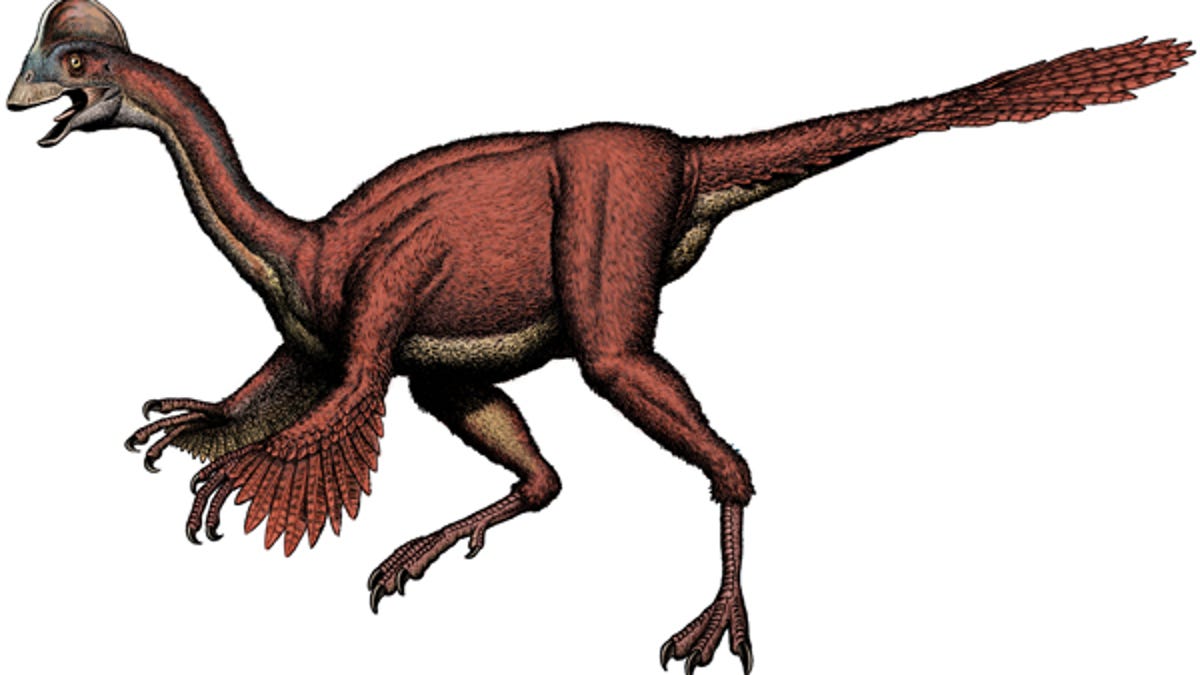Paleontologists discover new "chicken from hell" dinosaur
Scientists have unveiled a new dinosaur they have dubbed the "chicken from hell".

The hellchook in the flesh.
(Credit: Bob Walters)
Scientists from the Carnegie and Smithsonian museums, as well as the University of Utah, have unveiled a new dinosaur they have dubbed the "chicken from hell".
A 66 million-year-old dinosaur has been discovered — a bird-like creature that provides palaeontologists with a first in-depth look at an oviraptorosaurian species called Caenagnathidae (SEE-nuh-NAY-thih-DAY) — one that has long been difficult to study, since most remains have only been skeletal fragments.
Named Anzu wyliei (Anzu after a bird-demon from Mesopotamian myth and wyliei after Wylie, the grandson of a Carnegie museum trustee), the new species was put together from three separate skeletons found in North and South Dakota, forming almost one entire skeleton. The resultant dinosaur measures 3.5 metres from nose to tail-tip, weighing in at 225 kilograms, with sharp claws and a feathered body — resembling, according to the researchers, led by Dr Matthew Lamanna of Carnegie Museum of Natural History in Pittsburgh, a "chicken from hell".
"It was a giant raptor, but with a chicken-like head and presumably feathers. The animal stood about 10 feet (three metres) tall, so it would be scary as well as absurd to encounter," said University of Utah biology postdoctoral fellow and study co-author Emma Schachner. "We jokingly call this thing the 'chicken from hell', and I think that's pretty appropriate," added Lamanna.
The three partial skeletons were excavated from the Hell Creek rock formation in North and South Dakota, a region famed for its abundance of dino skeletons, including Tyrannosaurus rex and Triceratops. It would, the researchers said, have resembled a giant flightless bird — much more so than more "typical" theropod species, such as Tyrannosaurus rex. A bony crest, similar to that found on the Australian cassowary, rises on its head, and its legs were long, slender and strong, also like the cassowary. It had no teeth, but a strong beak, and it was found alongside fossilised feathers, heavily indicating that the dinosaur was feathered.
However, it's not entirely bird-like — its forelimbs were tipped with sharp claws, and it had a long, strong tail.
The discovery is the first clear skeleton found belonging to the Caenagnathidae since the species was first discovered and described by paleontologist Charles Whitney Gilmore 100 years ago. It has allowed researchers for the first time to explore in greater detail Caenagnathid anatomy, and reconstruct the species' evolution. Its anatomy and environment has also delivered new information about Caenagnathid diet and habitat preferences; the dinosaurs, the team believes, were omnivores that preferred humid floodplain environments.
Anzu in particular seems to have lived a pretty dangerous life; two of the three skeletons show evidence of breaks and fractures. However, the fact that these injuries had healed indicated that the hellchooks were hardy, able to survive quite a bit of trauma.
A fully articulated cast of the dinosaur is on display at the Carnegie Museum of Natural History, and the full research paper can be seen online in the journal PLOS One.

